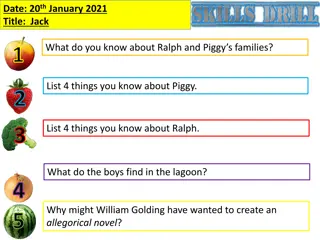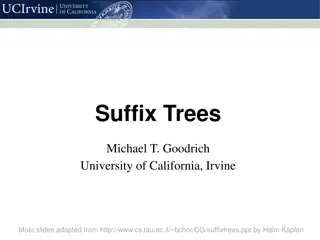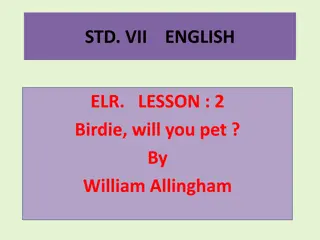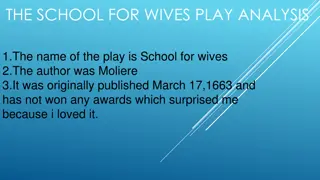
Understanding Tries: A Comprehensive Overview
Explore the concept of trie data structures, also known as digital trees or prefix trees. Learn about their implementation, insertion, search algorithms, and time complexity analysis. Discover how tries efficiently store words from a dictionary and enable fast prefix-based searches.
Download Presentation

Please find below an Image/Link to download the presentation.
The content on the website is provided AS IS for your information and personal use only. It may not be sold, licensed, or shared on other websites without obtaining consent from the author. If you encounter any issues during the download, it is possible that the publisher has removed the file from their server.
You are allowed to download the files provided on this website for personal or commercial use, subject to the condition that they are used lawfully. All files are the property of their respective owners.
The content on the website is provided AS IS for your information and personal use only. It may not be sold, licensed, or shared on other websites without obtaining consent from the author.
E N D
Presentation Transcript
Tries By Ralph McDougall IOI Camp 3 4 March 2017
What is a trie? A trie is sometimes called a digital tree, radix tree or prefix tree Trie is pronounced either tree or try , depending on who you ask A trie is a data structure that stores words from a dictionary It allows O(L) insertion where L is the length of the word being added It allows O(L) existence detection where L is the length of the word being checked for Since it stores prefixes, it allows us to find all words in a dictionary with a certain prefix
Implementation To implement a trie, just like with a tree, we need some nodes Each node stores an array containing all of its children and whether or not it is an endpoint. We also need a root node which acts as the start point for the search and insert algorithms.
Implementation That s all there is to it!
Insertion We start at the root vertex We go to the child vertex corresponding to the next character of the word that we are inserting If that node does not exist, we add a new node there and go to it We keep doing this until we have checked all of the characters We mark the last vertex visited as an end node for a word. Notice that adding a new node and moving to a new node takes O(1) and checking each character takes O(L) Thus insertion is O(L)
Search We start at the root vertex If the next character isn t present, the word isn t present, so we can return false We move to the next character and repeat this until we have checked all of the characters We return true if the last node is an end node and it is valid Checking if a character is present takes O(1) and checking each character takes O(L) Thus, searching takes O(L)
Analysis Time complexity: Insertion: O(L) Search: O(L) Space complexity: O(NL)
Example Question You are given a dictionary of N words and word W. You want to find the closest match to W in the dictionary. The closest match is the word that differs from W in the least number of characters. ( car is closer to cat than bat is to cat )
Bruce Force Solution Generate each possible word that can be obtained from W by changing a few characters. This takes exponential time, which is terrible!
Trie Solution We create a prefix tree of all of the words in the dictionary. We now do a Dijkstra on the tree keeping track of how many characters it differs by at each stage. We can calculate the answer much faster using this.
Trie Solution We can construct the prefix tree in O(LN) where L is the length of the longest word. We can check if a word is in the prefix tree in O(LK). Thus we can complete the problem in O(L2NK). Note that this is the worst case scenario.






















